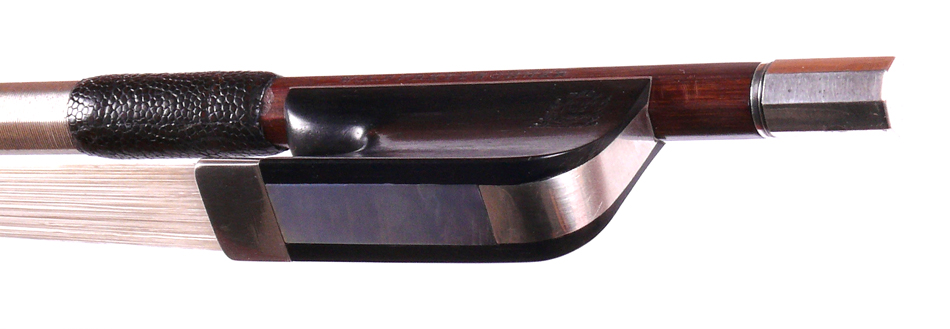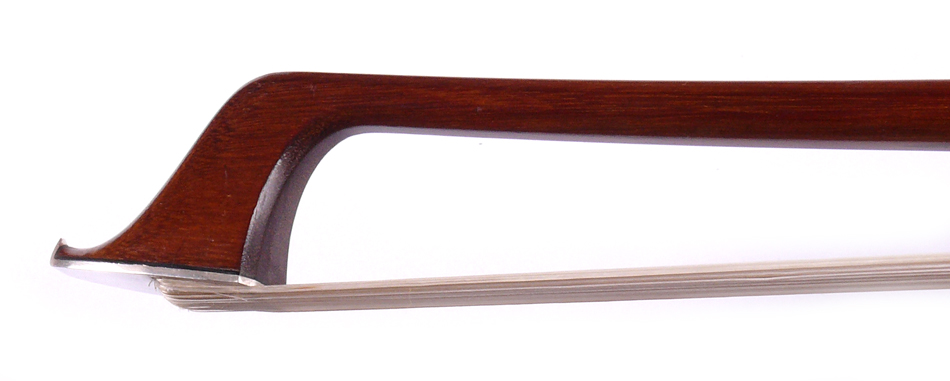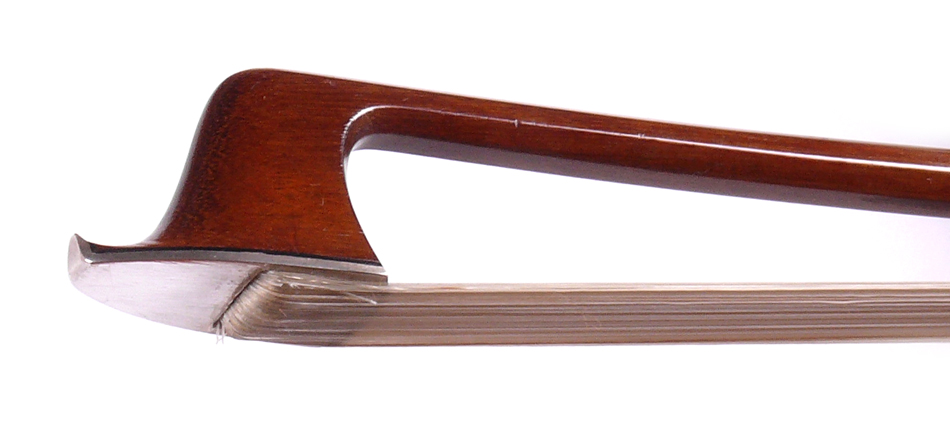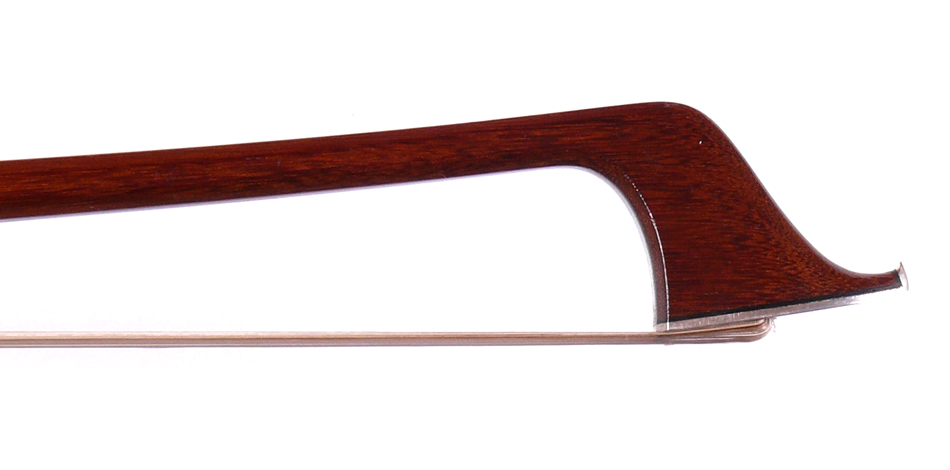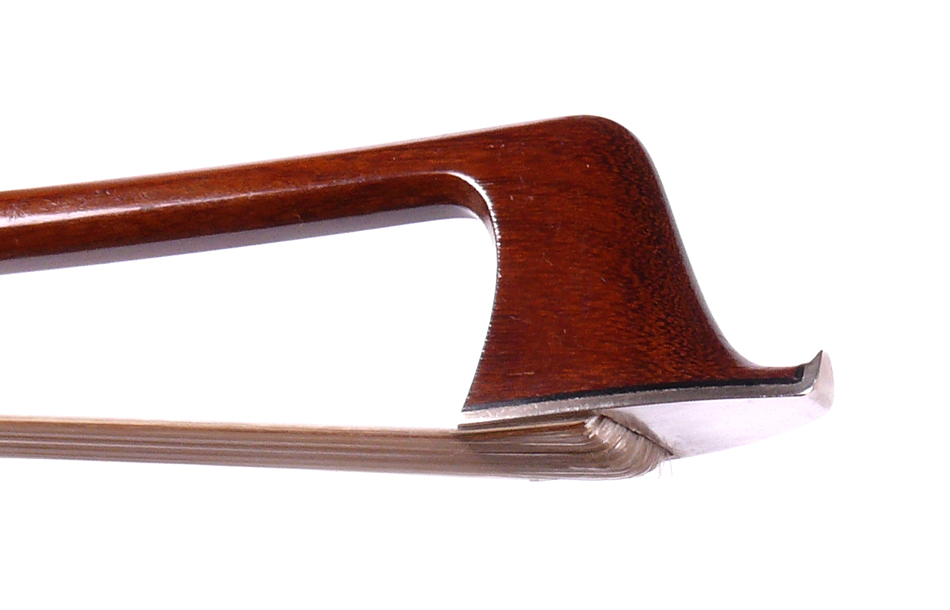|
Within the hierarchy of the Pfretzschner bowmaking family, Wilhelm August Pfretzschner (1871-1939), stands out for his unusually careful and meticulous work in which he sacrificed quantity for quality in that he maintained a very high and consistent standard in his work, but produced fewer bows.
What is not always understood or appreciated is that both the two most important Pfretzschner bow makers have their roots deep in the French bow making traditions, rather than in German styles. (Notably, H. R. Pfretzschner (1856-1921) - the most prolific and respected maker of that family - was the last pupil of J-B Vuillaume in Paris and he styled most of what he did on what he learnt from the French makers.)
Following closely is the maker of this bow, Wilhelm August Pfretzschner. In workmanship this maker rivalled the more illustrious H. R. Pfretzschner, whose prolific output could not easily be equalled in quantity, yet it appears that W. A Pfretzschner's meticulous attention to detail and quality took first place in his preoccupation over quantity. This puts his work on a par with that of his more famous namesake.
It appears that W. A. Pfretzschner understood the French formula for an amalgam of suppleness and lightness combined with just the right firmness to allow for good control - all combined into marvelous balance, response and articulation. And this French influence is immediately apparent to anyone who picks up one of his bows and starts playing with it. With these Pfretzschners the player draws the sound from the instrument, rather than pushing it out, as one is inclined to do with too hard or heavy a stick.
What strikes one immediately about this bow, is its impeccable condition. It dates (at a guess) from the latter part of the maker's life, probably the mid-1930s, when he was at the peak of his experience. The silver-mounted plain black ebony frog has the maker's crest stamped into the player's side. The octagonal pernambuco stick is flawless, straight and with healthy camber.
Coming across such a pure and well-preserved example of this maker's work, is in itself rare, making this a unique investment opportunity.
Note that the thumbpad is recent (by Svend Christensen), but is of ostrich leather and not of lizard, which it closely resembles but which has an international trade ban imposed on it by CITES. This bow is sold with a certificate confirming that the leather on it is ostrich on not lizard.
|
|
|
The Stick :
|
| |
Octagonal Pernambuco
|
|
The Nut :
|
| |
Certainly original to the stick. Plain ebony (no eye) with the maker's crest on the player's side. No cracks or repairs.
|
|
Lapping :
|
| |
Solid silver wire lapping. Thumbpad of black ostrich-leg leather, intended to imitate the original lizard skin thumbpad the bow was fitted with. The lizard skin was removed to conform to CITES regulations banning trade in lizard skin. The new thumbpad is by Svend Christensen.
|
|
Condition :
|
| |
Impeccable. The stick is perfectly straight with healthy camber. No repairs. The adjuster button fits perfectly, but I doubt if it is the original. In my view the rest of the bow is as made by the maker.
|
|
Provenance :
|
| |
This bow was aquired in New York in 2011 by Johan Grobbelaar, who now owns it. Earlier provenance withheld.
|
|
Price :
|
Withheld
|
|
This is somewhat under the price history for a good silver-mounted cello bow by the Pfretzschner family.
|
|


